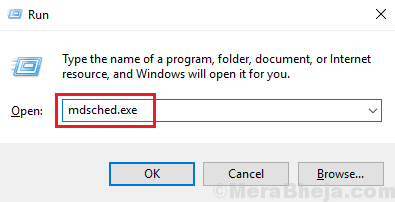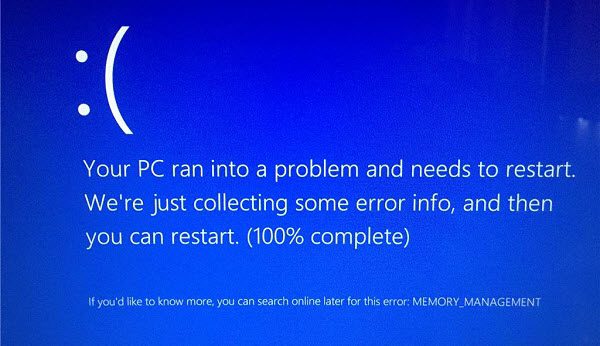

- BLUE SCREEN MEMORY MANAGEMENT 00001A UPDATE
- BLUE SCREEN MEMORY MANAGEMENT 00001A CODE
- BLUE SCREEN MEMORY MANAGEMENT 00001A WINDOWS 7
Your CPU could be placed in the slot improperly, damaged or downright defective - if you’re a desktop user that knows what you’re doing, you can check it out. If that doesn’t work or you’re using a laptop, the problem may be more severe. (Be sure to make sure they’re compatible and inserted properly - RAM displacement could actually cause this problem, too!)

If you’re using a desktop, this should be easy - power off your computer, open up your case, remove your RAM sticks, and pop in new ones.

If your computer has been rendered unusable by the MEMORY_MANAGEMENT error, you’re going to want to check and replace your RAM (Random Access Memory).
BLUE SCREEN MEMORY MANAGEMENT 00001A WINDOWS 7
This error on Windows 7 and earlier versions of Windows.Ī photograph of this error on Windows 10.A Blue Screen of Death occurs when your computer encounters something it can’t process, and the name it tosses up is gathered from what it can figure out, which is usually fairly accurate and leads to you solving your problem. If this is the first time you’ve seen something like this, congratulations - you’ve encountered the infamous Blue Screen of Death, and we’re here to help. The pcre_compile2 function in pcre_compile.c in PCRE 8.Error Name: MEMORY_MANAGEMENT STOP Code: 0x0000001A

Rancher in this case would attach the requested credentials without further checks This issue affects: Rancher versions prior to 2.5.9 Rancher versions prior to 2.4.16.
BLUE SCREEN MEMORY MANAGEMENT 00001A CODE
A privileged user/process inside a guest could use this flaw to crash the QEMU process or, potentially, execute arbitrary code on the host with privileges of the QEMU process.Ī Improper Access Control vulnerability in Rancher, allows users in the cluster to make request to cloud providers by creating requests with the cloud-credential ID.
BLUE SCREEN MEMORY MANAGEMENT 00001A UPDATE
A privileged user inside guest could use this flaw to crash the QEMU process OR potentially execute arbitrary code on host with privileges of the QEMU process.Ī heap buffer overflow flaw was found in QEMU's Cirrus CLGD 54xx VGA emulator's VNC display driver support before 2.9 the issue could occur when a VNC client attempted to update its display after a VGA operation is performed by a guest. The issue could occur while copying VGA data in cirrus_bitblt_cputovideo. Quick emulator (QEMU) before 2.8 built with the Cirrus CLGD 54xx VGA Emulator support is vulnerable to an out-of-bounds access issue. A remote unauthenticated attacker could potentially exploit this vulnerability to gain access to the virtual console. Anyone able to make a TCP connection to any compute host IP address, including 127.0.0.1, other loopback interface addresses, or in some cases possibly addresses that have been exposed beyond the management interface, could use this to open a virsh session to the libvirtd instance and gain control of virtual machine instances or possibly take over the host.ĭell EMC iDRAC9 versions 4.40.00.00 and later, but prior to 4.40.10.00, contain an improper authentication vulnerability. Libvirtd is deployed by default (by director) listening on 0.0.0.0 (all interfaces) with no-authentication or encryption. A design flaw issue was found in the Red Hat OpenStack Platform director use of TripleO to enable libvirtd based live-migration.


 0 kommentar(er)
0 kommentar(er)
